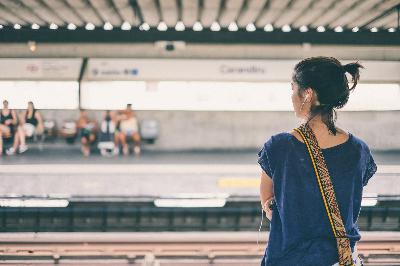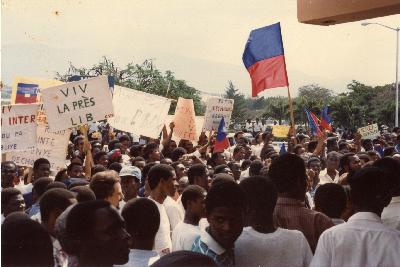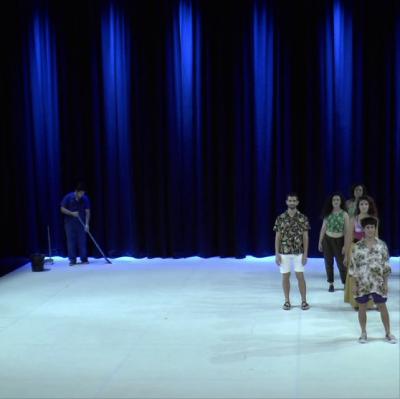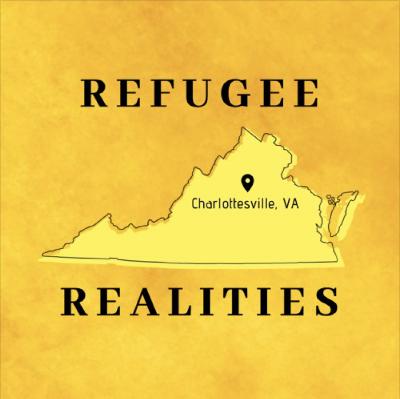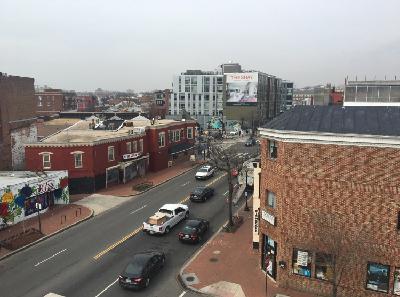Soundwalking on the Edges: Sound, Safety and Privilege in São Paulo, Brazil
Description
 Since its inception at the World Soundscape Project in the 1970s, soundwalking has emerged as a critical method for sound studies research and artistic practice. Although “soundwalking” now describes a diversity of activities and purposes, critical discussions and reading lists still rarely represent or consider the experiences of people of color (POC). As Locatora Radio hosts Diosa and Mala have argued in their 2018 podcast about womxn of color and the sound of sexual harassment in their everyday lives and neighborhoods, sound in public space is weaponized to create “sonic landscapes of unwelcome” for POC.
Since its inception at the World Soundscape Project in the 1970s, soundwalking has emerged as a critical method for sound studies research and artistic practice. Although “soundwalking” now describes a diversity of activities and purposes, critical discussions and reading lists still rarely represent or consider the experiences of people of color (POC). As Locatora Radio hosts Diosa and Mala have argued in their 2018 podcast about womxn of color and the sound of sexual harassment in their everyday lives and neighborhoods, sound in public space is weaponized to create “sonic landscapes of unwelcome” for POC.
While we often think of soundwalks as engines of knowledge production, we must also consider that they may simultaneously silence divergent worldviews and perspectives of space and place. In “Black Joy: African Diasporic Religious Expression in Popular Culture,” Vanessa Valdés explored alternate conceptions of space held by practicioners of Regla de Ocha, epistemologies rarely, if ever, addressed via soundwalks. “Within African diasporic religions . . . including Palo Monte, Vodou, Obeah, Macumba, Candomblé – there is respect for the seemingly inexplicable,” Valdés remarks, “there is room for the miraculous, for that which can be found outside the realms of what has been deemed reasonable by systems of European thought. There is room for faith.” Does current soundwalk praxis—either as research method, public intervention, artistic medium, field recording subject, or pop culture phenomenon—impose dominant ideas about space and knowledge production as much as—if not more–they offer access to alternatives? Are there alternate historiographies for soundwalking that predate the 1970s? Can soundwalks provide such openings, disruptions, and opportunities without a radical rethinking? What would a decolonial/decolonizing soundwalk praxis look and sound like?
Soundwalking While POC explores these questions through the work of Allie Martin, Amanda Gutierrez, and Paola Cossermelli Messina. To read the series from the beginning click here. Today, Paola Cossermelli Messina revisits the São Paolo of her youth. —JS
When at home in São Paulo, Brazil, I rarely walk to where I’m going. In a city plagued by mobility issues, a private car is the most efficient way of getting around. Other factors in opting out of public transportation include the limited reach of the subway system, overcrowdedness on buses, sexual harassment of women on public transport going unpunished, and price hikes that lead to no infrastructural improvements. The 2013 protests in Brazil, the largest demonstration in two decades, were initially set off by increased ticket prices for the bus, train, and metro, and later encompassed additional concerns such as corruption and police brutality.
Having spent most of my childhood and all of my high school years (between 1987 and 2005) in São Paulo, I find myself looking back at my sensory experience of the city as one mediated by fear, segregation, and vigilance. I have become interested in Vincent Adrisani’s (2015) idea of sonic citizenship—ordinary, everyday auditory interactions and experiences through which presence in and claim over public spaces is asserted. Consequently, I recorded the following soundwalks on two specific routes to engage with what were once-familiar surroundings as a “sonic citizen.” These soundwalks made me revisit fears and privileges from my life as a queer, white/POC, expatriate/immigrant on the edges of color, as I walked through a microcosm of São Paulo, recording the urban soundscapes that enveloped my day-to-day.
Looking up Rua Juquiá on December 29th, 2018. Images by author
The audio clips included in this essay were sampled from a morning walk between my former high school and home in the Zona Oeste (Western Region), and also from a brief walk on Avenida Paulista. This is a bustling, iconic avenue at the top of one of the steepest hills in the city, located at the crux of the Western, Central and Southern regions of São Paulo. Where one soundwalk ends is merely a ten minute walk from where the other begins. These are physically close, but sonically contrasting, public spaces, both of which are significant to my experiences in the city.
Rua Juquiá is a tree-lined street with walled-off houses and, in my memory, filled to the brim with cars as early as seven in the morning. My school was the only non-residential building on that street. During the day, personal security guards and drivers would find a place to park and nap until the final school bell rang. I recall making a bee line from my mother’s car to the school gate, motivated by word-of-mouth tales of “sequestros relâmpagos” (literally translated to “lightning kidnappings”). Young people going to private schools were said to be the focus of these kidnappings, in which they would be picked off the street by kidnappers and held for ransom. There was one occurrence of this while I was a student at that school.
With these stories in mind (and sometimes also in my dreams), a sensory engagement with my surroundings was often limited in time and scope, as I moved cautiously between interiors – private vehicles, school, thirty-story buildings towering high above the streets, and shopping centers patrolled by armed guards. At night as I laid down to sleep, the sounds of trucks straining to make their way up the steep slope of my street and motorcycle exhaust pipes blasting echoed in lively conversation with each other.
The relationship between my privilege and racial identity were, at that time, quite different from how it would come to be in the United States. Being of mixed Middle Eastern and European descent in Brazil is an identifier of whiteness and, more often than not, an indicator of a comfortable living situation. My school uniform with its red blazer and dark grey skirt, the uncommonly green neighborhood where most of my daily routines took place, and the double-gated apartment building I lived in, were all indicators of my status.
Identifying as queer is the only aspect that overlaps the boundaries between Brazil and the United States, where I currently reside. In both nations, the expression of this identifier is mediated by different levels of fear of violence—not of violence like the one I feared in Brazil, but violence nonetheless. Throughout my youth, it lurked beneath the surface of my consciousness, compounding the fear I already carried in my body. In the U.S., the compounding factors are my mixed racial features and immigration status (or as the USCIS dubs us ‘aliens’). In the eyes of all major institutions of this country, I am a person of color. As such, the soundwalk in São Paulo also became an experiment in juxtaposing these varying experiences at the intersection of privilege, queerness, and race.
In listening to the soundwalk clips below, I find that the absence of people’s voices and sounds, rather than the presence of supposed ‘dangerous people’, per se, is the most disconcerting thing. Though nature sounds predominate in the clips from this walk, they seem to exist in a cement vacuum.
<

